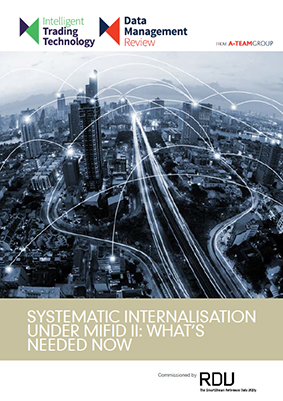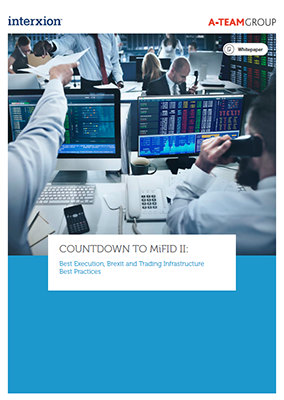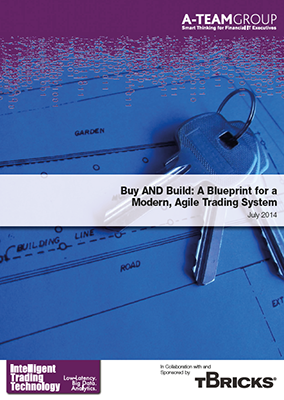TradingTech Insight Trade Execution Technology The latest content from across the platform
MiFID II: Navigating the Emerging Liquidity Landscape
The September 1 deadline for full implementation of the Systematic Internalisation (SI) regime marked the beginning of a whole new liquidity landscape, with firms on both sides of the equation grappling to understand the long-term implications of the new system on Europe’s financial markets. Navigating these waters in the coming months will be challenging for…
Systematic Internalisation Under MiFID II: What’s Needed Now
From September 1, 2018, firms within the scope of MiFID II that breach volume thresholds set by ESMA on August 1, 2018 for internal matching of client orders will be required to register as systematic internalisers (SIs) and operate within the SI regime detailed in the regulation. Sounds pretty straightforward, but that is far from…
MiFID II: What’s Next?
With regulators indicating that they will enforce MiFID II in the second half of this year, how robust is your compliance solution? How ready is it to take on the oncoming requirements of the regulation? And to what extent do you need to review and renew systems to achieve a sustainable, industrialised and cost-efficient solution?…
MiFID II: Time for Action
As the January 3, 2018 compliance deadline for Markets in Financial Instruments Directive II (MiFID II) approaches, trading businesses within the scope of the regulation must address outstanding technology issues around elements such as transparency, best execution, algorithmic trading, high frequency trading, time synchronisation and systematic internalisation. This White Paper, sponsored by Itiviti, discusses MiFID…
Countdown To MiFID II: Best Execution, Brexit and Trading Infrastructure Best Practices
The events of 2016 have muddied the waters for financial institutions operating in Europe that need to figure out how planning for possible outcomes of Brexit will in turn affect compliance with European MiFID II regulation taking effect in January 2018. While it is widely recognised that firms will have to make major changes to…
How to Create an Agile Trading System
High speed, low latency trading connectivity is no longer enough to differentiate you from your competitors – so how do you add value to your trading systems? How can you create a trading platform that is: Flexible enough to accommodate the transaction lifecycle? Powerful enough to deliver the analytics for better informed trading decisions? Fast…
A Flexible Approach to Market Infrastructure
The growing speed and complexity of today’s financial markets are placing all but the most technologically well-resourced participants at a strategic disadvantage. Buy- and sell-side firms, the execution venues they use, and the wide range of post-trade, market data and other service providers whose offerings they consume, are all struggling to keep up with the…
Viewpoints on Latency – I Am Not a Number – May 2011
The “Three Ms of Latency” are a set of essential steps that turn the data that’s derived from a roster of tools – including those from contributors Corvil and TS-Associates – into meaningful, actionable information that can be leveraged to boost one’s business. The Three Ms of Latency are: Measure, Monitor and Manage. It all…
Data Management for New Trading Opportunities
As high-frequency and quantitative trading techniques mature, trading firms are finding it harder to make money. Market practitioners are recognizing that speed of market access alone is no longer sufficient to stay ahead of the pack, as low-latency connectivity enters the mainstream. The emphasis is returning to the quality of the trading model. In order…
Trading Beyond the Horizon: Fragmentation Drives Multi-Market Execution
In 2010, financial markets participants will continue to expand their trading activities as liquidity increasingly becomes fragmented, seeking alpha in new markets, best execution in dark pools, arbitrage opportunities across the order book and by implementing high frequency and complex, multi-leg, cross asset class strategies. The successful operations – whether they be the proprietary desks…











